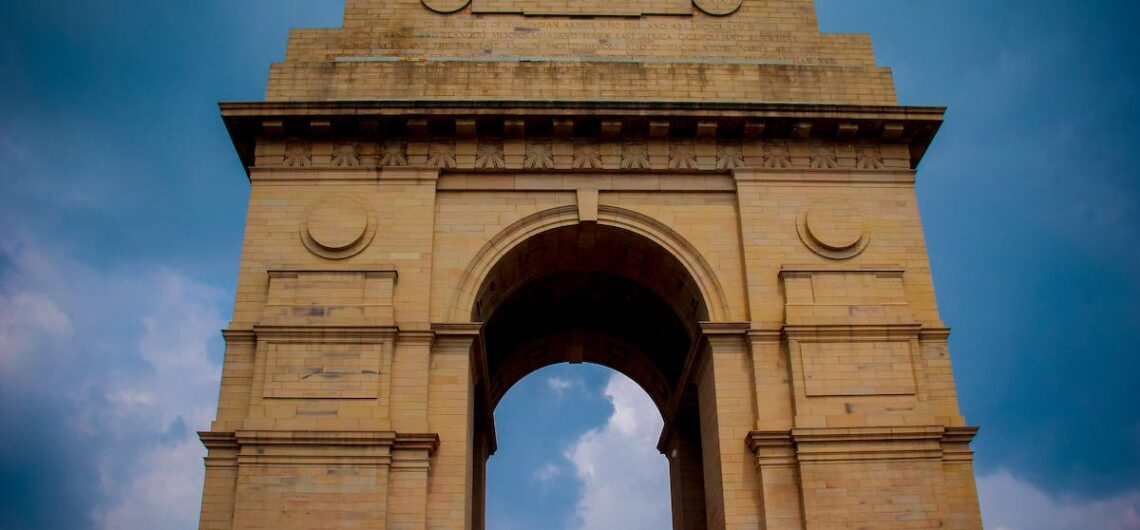Delhi, the vibrant and bustling capital of India, is a city steeped in history. From ancient monuments that echo tales of bygone empires to Mughal-era wonders that captivate with their grandeur, Delhi is a treasure trove for history enthusiasts. In this comprehensive 2000-word blog, we embark on a detailed exploration of Delhi’s historical places, each narrating a chapter of the city’s rich and diverse past.
Qutub Minar

Qutub Minar is a UNESCO World Heritage Site located in Delhi, India. It is a historical monument and an iconic symbol of Indo-Islamic architecture.
Chronicles the early Muslim rule in India and offers a mesmerizing blend of ancient Indian and Islamic architecture. Built in the 13th century by Qutub-ud-din Aibak and later expanded by Iltutmish and Firoz Shah Tughlaq, the Qutub Minar reflects the Indo-Islamic architectural style.
The towering Qutub Minar, a UNESCO World Heritage Site, stands at 73 meters. Other structures like the Quwwat-ul-Islam Mosque and the Iron Pillar add to its historical significance.
Red Fort

Built by Shah Jahan in the 17th century as the main residence for Mughal emperors, the Red Fort witnessed significant historical events, including India’s independence celebrations. The Red Fort, also known as Lal Qila, is a UNESCO World Heritage Site located in Old Delhi, India. It stands as a powerful symbol of India’s rich history and architectural grandeur.
The Red Fort is known for its impressive gates, including the Lahore Gate and the Delhi Gate. The Diwan-i-Aam (Hall of Public Audience) and Diwan-i-Khas (Hall of Private Audience) are significant structures within the fort. The fort’s architecture showcases intricate carvings, domes, and sprawling gardens.
Humayun’s Tomb

Humayun’s Tomb, situated in Delhi, India, is a magnificent mausoleum and a UNESCO World Heritage Site. Humayun’s Tomb is a striking example of Mughal architecture and serves as the final resting place of the Mughal Emperor Humayun. Built in the mid-16th century, it is known for its grand scale, symmetrical design, and the use of red sandstone and white marble.
The tomb’s architecture is characterized by its symmetrical layout, lush gardens, and a central octagonal chamber containing the emperor’s cenotaph. The main structure is adorned with intricate geometric patterns, calligraphy, and delicate latticework.
Humayun’s Tomb is considered a precursor to the Taj Mahal, influencing the design of subsequent Mughal mausoleums. It introduced the concept of a garden tomb, setting the stage for the iconic structure in Agra.
India Gate

India Gate is a massive war memorial constructed in honor of the soldiers who sacrificed their lives in World War I. It stands as a solemn tribute to the Indian soldiers of the British Indian Army who lost their lives during the war.
India Gate was built in 1921 and completed in 1931. Originally known as the All India War Memorial, it was later renamed India Gate. The monument has since become a symbol of national pride and sacrifice.
The architecture of India Gate is inspired by the Arc de Triomphe in Paris. It is a triumphal arch made of red sandstone and granite, standing at a height of 42 meters. The archway bears the names of over 13,000 British and Indian soldiers who died in the Afghan War of 1919.
Jama Masjid

Jama Masjid, located in Old Delhi, is one of the largest and most magnificent mosques in India.
Commissioned by the fifth Mughal Emperor, Shah Jahan, Jama Masjid was designed by the prominent architect Ustad Khalil. The construction of the mosque began in 1650 and was completed in 1656. It holds historical significance as it was the central mosque of Shah Jahan’s new capital, Shahjahanabad (present-day Old Delhi).
Jama Masjid, also known as Masjid-i Jahan-Numa, is a grand mosque constructed during the Mughal era. Completed in 1656, it stands as a testament to the architectural prowess and cultural richness of the Mughal dynasty.
Purana Qila (Old Fort)

Built by the Mughal Emperor Humayun, Purana Qila has witnessed centuries of history. Its construction started in 1533 but was completed by Sher Shah Suri, who briefly took over Delhi. The fort underwent subsequent modifications during different periods, reflecting the architectural influences of various rulers. Purana Qila, also known as Old Fort, is a historic fortress located in the heart of Delhi, India.
Purana Qila is characterized by its red sandstone walls and impressive gates. The fort is surrounded by a wide moat and features three main gates: Bara Darwaza, Humayun Darwaza, and Talaqi Darwaza. The Qila-i-Kuhna Mosque within the complex is an example of classic Mughal architecture.


Comments